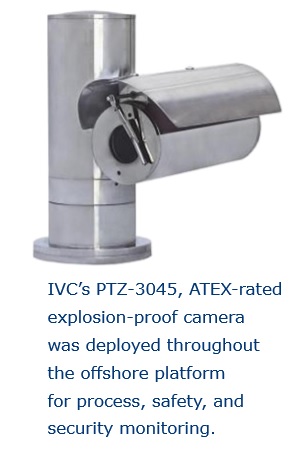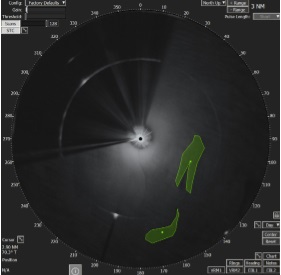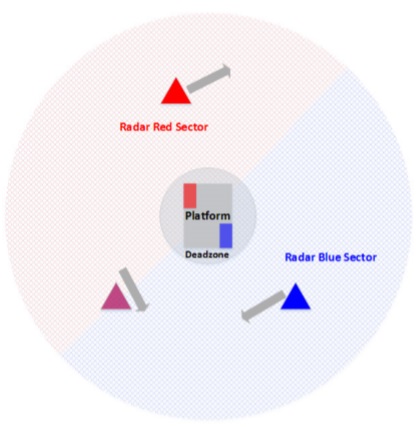Alarm Integration in Critical Video Monitoring Systems
When selecting a video solutions partner to provide a system for your critical process, security, or safety monitoring application, it is important to consider that the ultimate solution is much more than a collection of cameras.
In addition to cameras, most comprehensive monitoring systems include video management software that provides a flexible platform for the integration other key components required by the solution. Examples of these components may include:
- Flame and smoke detectors
- Toxic chemical detectors
- Proximity sensors
- Perimeter security devices
- Audio and visual alarm indicators
- Temperature sensors
- Fluid or gas leak detection sensors
- HVAC controls
- Analytical software
A successful deployment of these technologies with video cameras will include video management software that includes APIs or other interface mechanisms that support industry standard protocols to easily interface other required components. This capability should also be easily extensible to add non-standard or custom devices required by the application.

Described below is an example of a critical security and safety monitoring application that required PTZ camera positioning to be automatically controlled by an on-board radar-based spill and intruder detection system. The solution provided required collaboration by the camera system provider and the radar company. The key to the successful implementation was Alarm Server integration component included with the video management software.
Deployment Site
In a remote section of the North Sea, west of the Shetland Islands, an offshore oil platform is in place to process an estimated 44 million barrels of crude oil, which will be extracted from the Solan oil field over 20 years. But unlike most oil platforms that have a permanent crew on board to monitor critical process areas and rig equipment, this platform will have a crew onboard for only one year. After that, the rig’s primary operations will be managed remotely, 250 miles away, at an onshore control room in Aberdeen, Scotland, with monthly visits for inspection and maintenance.
Requirements
Premier Oil, the key investor and developer of the Solan oil field, decided to house its operations onshore to reduce operational costs. The company tasked Emerson Process Management, the main automation contractor for the Solan project, with supplying a remote monitoring solution that could:
- Replicate the robust controls and monitoring capabilities of an onboard operations center
- Be controlled over a redundant satellite link
- Integrate seamlessly with disparate sensor technologies and
- Integrate video and camera controls from on-board cameras into DeltaV Operate screens.
Emerson selected Industrial Video & Control’s video management system to address Premier’s requirements for remote monitoring. The final, integrated IVC/Emerson solution lets Premier’s onshore operations team seamlessly monitor and manage offshore activity 24/7 over a satellite link.
A key requirement of the control system was the ability to detect oil spills and potential intruders. The customer desired that the video monitoring system integrate with the detection technology that was eventually chosen. This application note focuses on this aspect of the video system solution provided by IVC.
Radar-based Spill/Intruder Detection
After an exhaustive search and evaluation process, the customer and the control system contractor settled on a spill/ intruder system from Rutter Radar of St. Johns, Newfoundland, Canada.
Rutter’s sigma S6 OSD (oil spill detection) and STS (small target surveillance) systems were chosen as a cost-effective, yet robust solution to enhance the security and safety of the normally unmanned platform.

As one of the first companies to develop radar-based oil spill detection technology, Rutter’s OSD System has been extensively tested and proven to be effective in independent trials conducted by the Norwegian Clean Seas Association for Operating Companies (NOFO). sigma S6 OSD System permits the user to set parameters that mitigate the occurrence of false positive spill detections. Users can select regions of the scan area to ignore based on known anomalies and can also prescribe specific ranges or distances from the scanner to exclude for detection. Minimum alarm thresholds can also be set.
The selection of this X-band 25kW radar based spill detection system was based as much on economics as it was on technology. A key decision point was the ability of Rutter’s system to communicate with the IVC video management system. This is required for two primary reasons:
- The desire to incorporate video from two Synectics CS3000-VT thermal cameras that are included with this system into the general video system, thus providing easy access to this video from a variety of on-shore an off-shore clients.
- The ability of the video management system to take GPS coordinates from the spill detection system and, if desired, move appropriate optical cameras to view the target detected by the spill detection system.
The ability to view video from both thermal and optical PTZ cameras that are under control of the spill/intruder detection system provides a comprehensive safety and security system in all weather conditions, 24 hours a day.
Integration
The system installed on this rig has two 180o detection zones. The system uses Scan Average Processing, which enhances the definition of small, slow moving objects. It enables the operator to accurately monitor activity and positions of spill response vessels and equipment.
A secondary function of this system is vessel security. Its long-range capabilities give operators advanced warning of any possible intruders.
Integration of the Rutter system and the IVC video system is accomplished via IVC’s Alarm Server component. IVC’s Alarm Server is an alarm system integration tool and, along with the IVC View Station client software, a rules-based alarm management product. The Alarm Server enables users to create a reliable and flexible alarm management system.

For this application, the Alarm Server computer is connected to the sigma S6 server via a serial link. As the Rutter system detects spills or potential intruders, it sends TTM messages containing GPS coordinates and bearing of the detected target over this serial link. The Alarm Server is programmed to view messages on the COM port connected to the Rutter system as MODBUS events. The IVC Alarm Server software is programmed to poll this location. When an alarm is detected, the Alarm Server parses the information in memory for the GPS coordinates.
The alarm definition for an alarm from the Rutter system includes a list of response actions. Response actions may include:
- Positioning of optical and thermal PTZ cameras
- Recording of video from one or more cameras
- Initiation of visual cues for operators Initiation of audio cues for operators
- Alarm notifications sent to interested parties
- Control of other connected systems (process shutdown, for example).
For this application, the Alarm Server sends camera positioning commands to the IVC Relay Server software with the GPS coordinates of the detected target. The Relay Server software then sends commands to the appropriate thermal and optical cameras to position the cameras and initiate recording.
Target Acquisition
For each camera that is to respond to targets acquired by the Rutter system, an Alarm Server event is defined. The definition of this event determines how or if the camera will respond depending on the bearing and location of the target.
Each event definition includes the GPS location of the origin (the Rutter radar). When a target is detected, the Alarm Server parses the bearing and location information in the TTM message. This information is then measured against parameters of the defined event to determine if this camera is to react to the event. If the camera is to react, the target coordinates in the TTM message are used to calculate camera positioning commands, which are sent to the camera by the IVC Relay Server.
Benefits
Given that the video and spill/intruder detection systems are on a platform that is intended to be normally unmanned, quickly and accurately identifying potential process upsets and security threats is crucial.
- The combination of the Rutter sigma S6 system and IVC’s industrial video system provide a tightly integrated solution to address these needs.
- Additional benefits of this system include:
- Ability to integrate live video and camera control into DeltaV Operate HMI screens provide additional eyes on operations
- Remote video monitoring of platform operations help minimize unscheduled visits to the platform
- Remote video monitoring and recording of platform incidents help operators quickly identify proper response activities
- IVC Alarm Server capability to monitor alarm messages from a variety of sources helps automate responses to critical situations.
- Additional PTZ cameras deployed as part of the video system improve safety monitoring by offshore and on platform operators when the vessel is manned.
A key reason this solution is successfully operating is that the control systems contractor engaged Rutter and IVC early in the project to integrate their respective technologies. The open nature of IVC’s Alarm Server made the integration process proceed smoothly and on schedule.
For more technical details please see this document or check the IVC’s website.
 This article was written by Michael Hrinishin is a technical sales manager at Industrial Video Control (IVC). IVC is a manufacturer of industrial video systems that are designed for a wide variety of safety, security, and process monitoring applications. Mike focuses on customer project management and is primarily responsible for evaluating customer video application requirements and recommending appropriate technical solutions.
This article was written by Michael Hrinishin is a technical sales manager at Industrial Video Control (IVC). IVC is a manufacturer of industrial video systems that are designed for a wide variety of safety, security, and process monitoring applications. Mike focuses on customer project management and is primarily responsible for evaluating customer video application requirements and recommending appropriate technical solutions.
